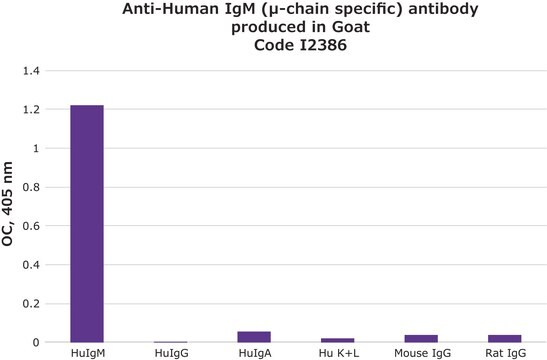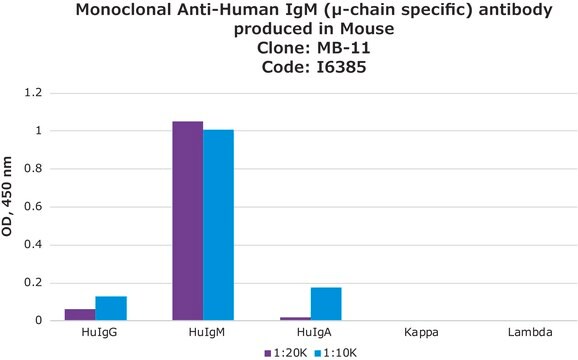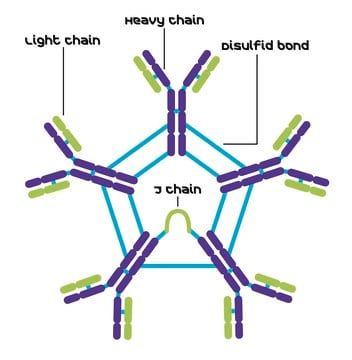A9935
Anti-Human IgM (μ-chain specific)−Agarose antibody produced in goat
affinity isolated antibody, PBS suspension
Sinónimos:
Anti Human IgM Antibody - Anti-Human IgM (μ-chain specific)-Agarose antibody produced in goat, Anti Human Igm Antibody
About This Item
Productos recomendados
origen biológico
goat
conjugado
agarose conjugate
forma del anticuerpo
affinity isolated antibody
tipo de anticuerpo
secondary antibodies
clon
polyclonal
formulario
PBS suspension
técnicas
Ouchterlony double diffusion: suitable
immunoelectrophoresis: suitable
capacidad
2-3 mg/mL, resin binding capacity (human IgM)
temp. de almacenamiento
2-8°C
modificación del objetivo postraduccional
unmodified
Descripción general
Cyanogen bromide activated cross-linked beaded agarose is frequently conjugated to proteins such as immunoglobulins to facilitate their use in physicochemical processes such as precipitation, absorption and clarification.
Aplicación
Acciones bioquímicas o fisiológicas
Otras notas
Forma física
Cláusula de descargo de responsabilidad
¿No encuentra el producto adecuado?
Pruebe nuestro Herramienta de selección de productos.
Código de clase de almacenamiento
12 - Non Combustible Liquids
Clase de riesgo para el agua (WGK)
nwg
Punto de inflamabilidad (°F)
Not applicable
Punto de inflamabilidad (°C)
Not applicable
Certificados de análisis (COA)
Busque Certificados de análisis (COA) introduciendo el número de lote del producto. Los números de lote se encuentran en la etiqueta del producto después de las palabras «Lot» o «Batch»
¿Ya tiene este producto?
Encuentre la documentación para los productos que ha comprado recientemente en la Biblioteca de documentos.
Los clientes también vieron
Nuestro equipo de científicos tiene experiencia en todas las áreas de investigación: Ciencias de la vida, Ciencia de los materiales, Síntesis química, Cromatografía, Analítica y muchas otras.
Póngase en contacto con el Servicio técnico









